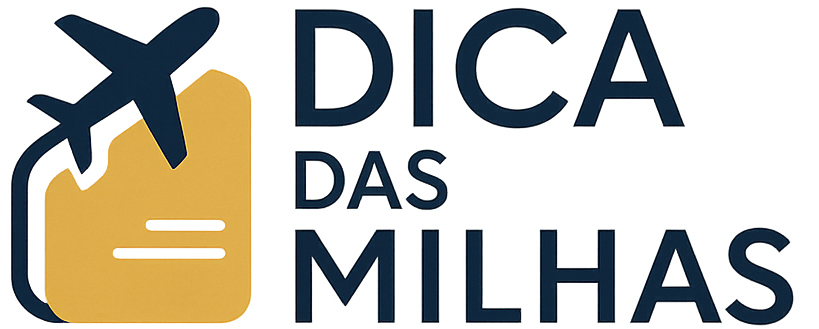Traveling using miles can feel like winning the lottery — free flights, luxurious upgrades, and VIP treatment. But getting the most out of your miles requires more than just collecting them. Many travelers unknowingly commit serious errors that destroy the value of their hard-earned rewards.
In this complete guide, you will learn the main mistakes when using miles, how to recognize them early, and how to avoid losing time, money, and opportunities.
Why It’s Important to Understand Common Mileage Mistakes
Miles are a form of currency, but they behave differently from money in a bank account. They devalue over time, depend heavily on airline policies, and require strategic planning.
Failing to use miles wisely can result in:
- Paying more than necessary for flights
- Missing out on premium experiences
- Losing miles due to expiration
- Feeling frustrated with loyalty programs
By knowing the main mistakes when using miles, you can travel smarter and extract maximum value from every point you’ve earned.
Mistake 1: Letting Miles Expire
One of the most heartbreaking errors is allowing miles to expire unused. Many loyalty programs impose strict expiration policies, usually 12 to 36 months after miles are earned.
Example:
Smiles miles expire after 3 to 6 years, depending on your elite status or club membership.
LATAM Pass miles often expire after 24 months of inactivity.
How to Avoid It:
- Track your miles using apps like AwardWallet.
- Engage with the program periodically: earning or redeeming even a small amount can reset expiration clocks in some programs.
- Subscribe to loyalty newsletters to receive alerts about expiring balances.
Mistake 2: Redeeming Miles for Poor-Value Rewards
Not all redemptions are created equal. Using miles for gift cards, merchandise, or low-cost economy flights often offers terrible value.
Example:
- Redeeming 10,000 miles for a $50 gift card → $0.005 per mile (0.5 cents).
- Booking a $1,000 business class flight for 50,000 miles → $0.02 per mile (2 cents).
Redeeming for merchandise usually gives you less than 1 cent per mile, while flights can deliver 2 to 4 cents per mile or even more.
How to Avoid It:
- Always calculate the value per mile before redeeming.
- Focus on high-value redemptions like international flights, business class, and last-minute premium cabins.
Mistake 3: Ignoring Taxes, Fees, and Surcharges
Many travelers are surprised to find that award tickets still require cash payments for taxes, fees, and fuel surcharges.
In some cases, these fees can make “free” flights extremely expensive.
Example:
Flying from the U.S. to London on British Airways using miles often includes over $600 in surcharges — despite using miles.
How to Avoid It:
- Compare total costs (miles + cash) before booking.
- Prefer airlines with lower surcharges (e.g., United, Delta, Azul).
- Use flexible reward programs that let you cover taxes with cashback if possible.
Mistake 4: Transferring Points Without a Plan
Transferring points from a bank rewards program to an airline without an immediate redemption plan locks you into that airline — forever.
Programs like Livelo, Esfera, Chase Ultimate Rewards, and Membership Rewards allow flexible holding. Once you move to an airline, your flexibility disappears.
How to Avoid It:
- Transfer only when you’re ready to book.
- Always verify seat availability before moving points.
- Use transfer bonuses only if they align with a real travel need.
Mistake 5: Waiting Too Long to Book
Award availability is limited. If you see a flight you want, hesitation can cost you the opportunity.
Award seats disappear quickly — especially for popular destinations, holidays, and premium cabins.
How to Avoid It:
- Book as early as possible (up to 11 months in advance).
- Have flexible dates and backup plans.
- Act fast when promotions or Saver awards appear.
Mistake 6: Overvaluing Elite Status
Some travelers obsess over earning elite status through mileage runs, sometimes spending thousands of dollars unnecessarily.
While elite status brings benefits like upgrades and lounge access, it’s rarely worth huge out-of-pocket expenses unless you travel constantly.
How to Avoid It:
- Calculate the true cost of chasing status versus benefits received.
- Focus on redeeming miles efficiently rather than chasing status tiers.
Mistake 7: Failing to Understand Program Rules
Each loyalty program has its own complex rules regarding:
- How miles are earned
- How award charts work
- Partner airline redemptions
- Surcharges and blackout dates
Not knowing these details leads to mistakes like missing transfer opportunities or paying too much.
How to Avoid It:
- Read the terms and conditions carefully.
- Follow expert blogs and newsletters to stay updated on program changes.
- Use airline calculators to simulate award costs before transferring points.
Mistake 8: Using Miles for Short Domestic Flights
In some cases, paying cash for short domestic flights is cheaper than using miles.
Example:
- Cash fare: Miami to Orlando = $80
- Award cost: 15,000 miles + $5.60
Value:
(80 – 5.60) / 15,000 = 74.40 / 15,000 = $0.0049 per mile (less than 0.5 cents)
Very poor redemption!
How to Avoid It:
- Always compare cash versus miles.
- Save miles for longer or more expensive flights where they offer better value.
Mistake 9: Not Checking Partner Award Availability
Sometimes, a partner airline offers the same route for fewer miles and lower surcharges.
Example:
- Booking via Smiles might cost 70,000 miles + $400 in fees.
- Booking the same flight via Delta SkyMiles might cost 60,000 miles + $60 in fees.
How to Avoid It:
- Check multiple programs when redeeming.
- Leverage alliance partnerships like Star Alliance, OneWorld, and SkyTeam.
Mistake 10: Paying Attention Only to Miles and Ignoring Credit Card Bonuses
Credit card signup bonuses are one of the fastest ways to accumulate large amounts of points and miles.
Ignoring these opportunities can dramatically slow your rewards accumulation.
How to Avoid It:
- Research credit cards offering bonuses of 50,000 miles or more.
- Align card spending with your travel goals.
- Plan applications strategically to maximize approval chances.
Avoiding the main mistakes when using miles can be the difference between frustration and phenomenal travel experiences.
Always:
- Calculate the true value of every redemption.
- Plan transfers and bookings carefully.
- Stay organized with expiration dates.
- Be flexible and ready to act when opportunities appear.
Miles are an incredibly powerful tool — but only if you manage them with the same care and strategy you would use managing real money.
Every mile counts. Make sure yours take you exactly where you want to go — in style and at the lowest cost possible.
Elaine A. da Silva is a Brazilian travel and finance enthusiast, best known as the creator of the blog Dica das Milhas. With a strong background in personal finance and a passion for exploring smart travel strategies, she specializes in simplifying the world of airline miles and travel rewards for everyday people. Through her blog, Elaine shares practical tips, insider knowledge, and step-by-step guides to help readers save money and travel more efficiently using loyalty programs and credit card points.







